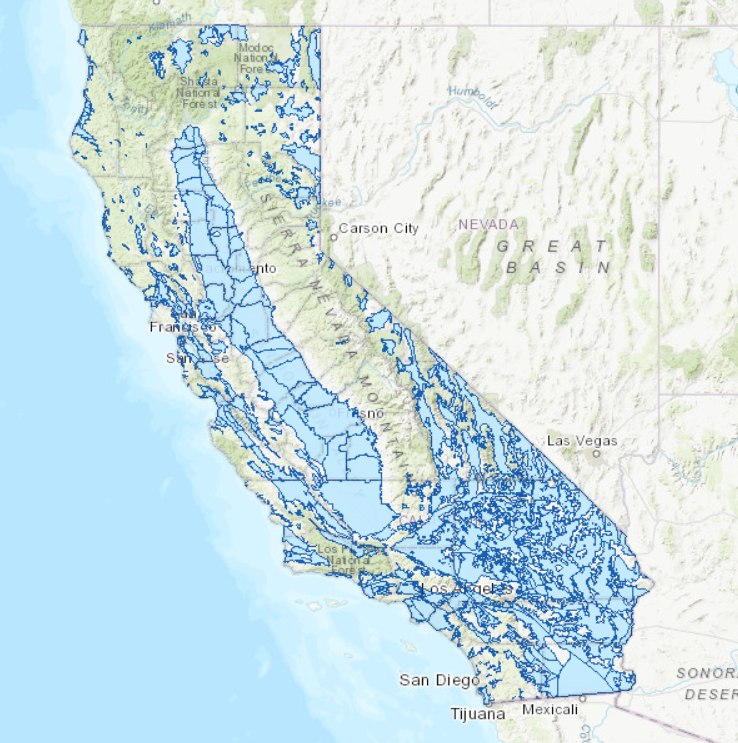A groundwater basin is defined as an alluvial aquifer or a stacked series of alluvial aquifers with reasonably well-defined boundaries in a lateral direction and a definable bottom. A groundwater basin is three-dimensional and includes both the surface extent and all of the subsurface freshwater yielding material.
A subbasin is created by dividing a groundwater basin into smaller units using geologic and hydrologic barriers or, more commonly, institutional boundaries. These subbasins are created for the purpose of collecting and analyzing data, managing water resources, and managing adjudicated basins.

Groundwater in California is also found outside of alluvial groundwater basins. Igneous extrusive (volcanic), igneous intrusive, metamorphic, and sedimentary rocks are all potential sources of groundwater. These rocks often supply enough water for domestic use, but in some cases can also yield substantial quantities. As we can see in the map of groundwater that groundwater basins are very limited in California.
California depends heavily on groundwater to meet its water supply needs, using more groundwater than any other state. During a typical year, approximately 40 percent of the state’s total water supply comes from groundwater. During dry years, groundwater contributes up to 60 percent (or more) of the state’s total supply and serves as a critical buffer against the impacts of drought and climate change. Approximately 31 million Californians obtain their drinking water from a public water system that relies on groundwater for at least part of the drinking water supply. Additionally, two million Californians are served by private domestic wells or small water systems. However, because groundwater is not easily visible, it is often taken for granted, putting important drinking water and irrigation sources at risk of contamination (by both naturally-occurring and man-made contaminants). The level of groundwater has changed drastically in southern California.
- 20% of groundwater is used in urban areas and 80% in agriculture.
- Out of 20%, only 3-4% of water is recycled.
